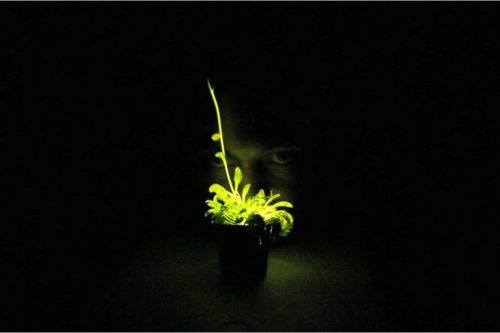Oh, man, Alex Jones. I don’t listen to his show, but I caught his impromptu press conference outside the courtroom where he’d just lost custody of his kids. It’s nuts. He goes on and on about the injustice and how he’s not crazy and he’s sincere and he motormouths on to prove he’s the victim here. It’s horrible and boring.
So just skip ahead to about 17’30” where he starts talking about science, for some reason.
Take human-animal chimeras. They have jokes all over tv saying Jones thinks they’re crossing humans with pigs and cows. Well, 20 years ago they were crossing humans and animals and growing them in utero for body parts.That’s mainstream scientific journals, but this camera man is laughing right here. You can type in human-animal chimeras, get a hundred thousand mainstream articles. But still people are preconditioned to make a joke that it doesn’t exist. Like Harvard saying fluoride lowers your IQ after just 2 years on just 1.6 parts per million by at least 10 points, 12 points 15 points. People just make jokes, they don’t look at the Harvard studies. It’s all just funny, because people are followers, and it makes them feel powerful to just laugh.
That’s a somewhat inaccurate transcript, because I think every sentence ought to have ended with an exclamation point, but you get the gist. It’s all flaming nonsense.
We have not been “crossing” humans with other animals. What has been done routinely is the fusion of animal cells in culture, and the insertion of human genes in the cells of other animals. There has been no man-bear-pig, sorry to say.
The fluoride stuff is classic crankery. There was a meta-analysis of some Chinese populations that showed that elevated fluoride levels was correlated with damage to neural development — but these were in regions with extraordinarily high natural fluoride levels. Steven Novella has a good analysis of that Harvard paper, and it doesn’t show what Jones thinks it does.
In other words – fluoridated water in the US has the same level of fluoride as the control or low fluoride groups in the China studies reviewed in the recent article, and the negative association with IQ was only found where fluoride levels were much higher – generally above EPA limits.
The interview goes on, and someone shouts out “spider goats!”, and he agrees but moves on. “Spider-goats” is a thing with Jones; he thinks it’s horrible that there are these goat-spider chimerae, when all it really is is that the gene for spider silk has been inserted into goats in such a way that they secrete the silk in their milk. It’s a nice way to generate bulk quantities of spider silk.
Have you ever tried to milk a spider? It’s hard, man.
Likewise, this story is inflated into absurdity.
20 years ago they had rhesus monkeys you cd buy in Hong Kong bazaars that glow in the dark that are part jellyfish. Think that’s funny? They have horrible eyes, it’s incredibly painful for them.
Uh, no, you can’t. There is a molecule called GFP (green fluorescent protein) that is derived from aequorin, a jellyfish protein. It’s commonly used as a molecular marker because, well, it glows green under the microscope when you shine light of the right wavelength on it (note: they don’t actually glow in the dark, they fluoresce, or re-emit light at a longer wavelength). Transgenic monkeys with GFP have been produced, more as a proof of concept than anything else. They don’t have horrible eyes. They actually look like normal monkeys, unless you put them in a dark room and illuminate them with only blue light, in which case they look greenish.
Just a suggestion to Alex Jones: when you’re trying to convince an audience that you’re a mature, rational, reasonable person, don’t go off on a tangent about spider-goats, pig-men, jellyfish-monkeys, or the dangers of fluoride to your essence. It also doesn’t help to wave your hands at “Harvard studies”, because some of us can actually read them and see that they don’t say what you claim they do.








